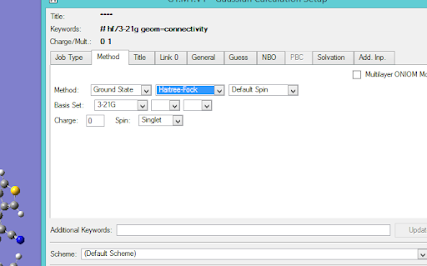“Unveiling
the Fundamentals of Density Functional Theory (DFT): Exploring Principles,
Equations, and Functionals Like B3LYP, CAM-B3LYP”
Introduction:
Density Functional Theory (DFT)
is a powerful computational method used in materials science, chemistry, and physics to understand and predict
the electronic structure of atoms, molecules, and solids. By
investigating the fundamental principles, mathematical foundations, Kohn-Sham
equations, and exchange-correlation functionals,
we can gain insight into
the inner workings of DFT. Furthermore, we will explore different types of
functionals and their impact on accuracy and computational cost, highlighting
the significance of choosing the appropriate functional for a given system.
Understanding
the Basic Principles of DFT:
Density Functional Theory is based on
the Hohenberg-Kohn theorems, which state that
the electronic density uniquely determines the external potential and, therefore, the total energy of a system. The central idea behind DFT
is to replace the many-particle wavefunction with
the electron density, making calculations computationally
feasible for complex systems.
Mathematical
Foundations of DFT:
DFT employs the Kohn-Sham
approach, which introduces a set of fictitious
non-interacting electrons moving in an effective
potential. The Kohn-Sham equations solve for the wavefunctions and energies of these fictitious electrons, while the
electron density is obtained by filling the orbitals according
to the Fermi-Dirac distribution.
The
Role of Exchange-Correlation Functionals:
The exchange-correlation
functional accounts for the missing
electron-electron interactions in the Kohn-Sham
equations. It combines the exchange energy, which arises from the antisymmetry of the electronic
wavefunction, and the correlation energy,
which accounts for the electron-electron interactions beyond mean-field approximation. Different types of
functionals exist, such as local density approximation
(LDA), generalized gradient approximation (GGA),
and hybrid functionals, each with varying
accuracy and computational cost.
Local
Density Approximation (LDA):
LDA is the simplest
form of the exchange-correlation functional,
assuming that the exchange-correlation energy per
electron is uniform throughout the system. While LDA provides reasonable results for many
systems, it may fail in situations where spatial
variations in the density are significant.
Generalized
Gradient Approximation (GGA):
GGA improves upon LDA by
considering not only the electron density but
also its gradient. This accounts for the inhomogeneity
of the electron density, making GGA functionals more
accurate for a broader range of systems. GGA functionals have gained significant
popularity due to their favorable balance between
accuracy and computational cost.
Hybrid
Functionals:
Hybrid functionals combine the simplicity of LDA or GGA with a fraction of exact exchange energy from Hartree-Fock theory.
This inclusion of exact exchange improves accuracy for systems involving strongly correlated electrons, such as transition metal complexes and catalytic reactions. However, the computational cost of hybrid functionals is higher compared to LDA and GGA.
B3LYP and CAM-B3LYP are examples of hybrid functionals within Density Functional Theory (DFT).
B3LYP (Becke,
three-parameter, Lee-Yang-Parr) is one of the most widely used hybrid
functionals. It combines the local density
approximation (LDA) with the gradient-corrected
exchange-correlation functionals of the generalized
gradient approximation (GGA). Additionally, B3LYP incorporates a
fraction of exact Hartree-Fock exchange.
CAM-B3LYP (Corrected
Application of B3LYP) is a modified version of
B3LYP that includes a long-range correction term to improve its performance for systems with significant dispersion
interactions. This correction accounts for long-range electron correlation
effects that are not well captured by standard functionals.
Hybrid functionals like B3LYP and
CAM-B3LYP offer improved accuracy compared to
pure LDA or GGA functionals, particularly for systems with strong electron correlation or dispersion interactions. They are commonly employed in computational chemistry for studying
reaction mechanisms, molecular properties, and spectroscopic properties of
molecules.
Conclusion:
Density Functional Theory (DFT) provides
a powerful framework for studying the electronic structure of atoms, molecules,
and solids. By understanding the basic principles, mathematical foundations,
and the role of exchange-correlation functionals, researchers can make informed
choices regarding the accuracy and computational cost of their DFT
calculations. Whether utilizing LDA, GGA, or hybrid functionals, selecting the
appropriate functional is crucial for obtaining reliable results in various
scientific applications. Continued advancements in DFT methodologies contribute
to our understanding of complex materials and facilitate the development of
innovative technologies in fields ranging from materials science to drug
discovery.



No comments:
Post a Comment